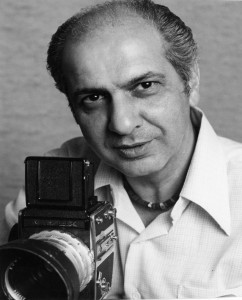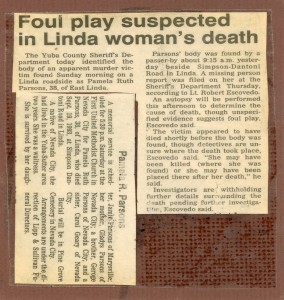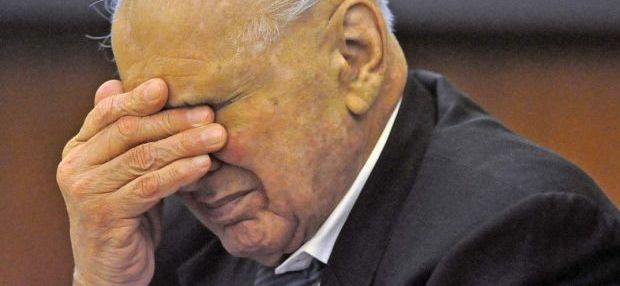“Is your life just like CSI?”
That is the prevailing question I get asked when someone learns of my occupation as Deputy Sheriff Criminalist for the Contra Costa County (CA) Office of the Sheriff. Alas, my life is not quite so glamorous. It actually often entails entering formulas into an excel spreadsheet while being placed on hold as I order some pipette tips.
But, why does it have to be that way?
I have attended my fair share of professional conferences and workshops and written numerous journal articles. As a forensic scientist I do believe in the importance of sharing data, new techniques, and new methodologies with my colleagues. Yet what I think is not highlighted enough is the one element that differentiates our field from any other scientific field – our involvement with the criminal justice system. Every case we work on involves a mystery, a crime, a victim(s), and a suspect(s). And while scientists in other fields typically only speak to other scientists, in my world, forensic scientists usually interact with a person in a black robe who has the power to strongly influence the outcome of a case. These wildly frustrating, invigorating, and challenging cases are the most interesting things about our field and yet we hardly share our stories.
I aim to change that.
Written by: Tony Nguyen, Contra Costa County Office of the Sheriff
I have been fortunate enough to be invited to speak at the Promega Technical Tour on April 12 at the CA Department of Justice Jan Bashinski Laboratory in Richmond, CA. The story I plan to share is about the small part I played in the case against Joseph Naso, the serial killer who preyed upon his victims from the 1950’s through the 1990’s in California.
Source of Image: Marin Superior Court
As with most serial killers, it was a technicality or a minor infraction that proved to be Naso’s downfall. In the case of his capture, the story begins with him stealing food from a local grocery store. Because of this transgression, Naso (who moved to Reno, NV) was put on probation and subjected to random searches. It was one of these probation searches that broke this case wide open. El Dorado County deputies, in conjunction with the Nevada DPS, found in his home a collection of mannequin parts and thousands of pictures of women that were either playing dead or actually dead. They also found dusty journals stacked neatly throughout the house.
Within the pages of the journals, the deputies discovered that Naso had chronicled every gig he had worked as a traveling photographer, as well as a list of those he potentially sexually assaulted over the years. There were over 250 such incidences listed in the journals. Entries contained graphic details and begged the question: Were these stories just his rape/murder fantasies? Or, were they actual documentation of all of his attacks? More importantly, tucked away in his house were ammunition and a pistol that were in clear violation of his probation. He was immediately arrested and taken to the county jail.
Naso’s arrest bought investigators valuable time to further investigate him and the ledgers. They wrote search warrants and seized his safety deposit box. Inside, they found $150,000 in cash, personal effects from women, a list containing ten descriptions of women, and newspaper clippings of missing women. Also nestled within the safety deposit box were newspaper clippings of two murdered women. Attached to the clippings were pictures that he had taken of them, alive, and scantily clad. One of the victims, Pamela Parsons was found murdered in the town of Linda, CA in September of 1993. The other victim, Tracy Tafoya, was found in a cemetery also in September of 1993. Both were prostitutes and both were strangled to death, yet their murders had remained unsolved.
Source of Image: Marin Superior Court
On Naso’s kitchen table investigators also found a list with ten entries; each included mention of a “girl” or “lady” and a specific location. Several of those locations matched those that were included as business entries in Naso’s ledgers. Furthermore, witness accounts of those same murders included mention of victims entered a blue pickup truck with a white camper shell, a vehicle that Naso happened to own. Investigators were fairly confident who committed these murders back in 1993, but they did not have enough evidence to arrest Naso.
A multi-agency task force including all of the agencies written on the list was quickly assembled. They combed through all of their unsolved homicides to determine if any of the victims were located near the areas described on Naso’s list. Two cases quickly rose to the top, the murders of Roxene Roggasch and Carmen Colon. Critical evidence from these crime scenes including ligatures that had been found tied around Roggasch, as well as fingernail clippings from Colon, were turned over to our laboratory as we offered to do the DNA work on these cases.
Unfortunately, the evidence had been stored at room temperature for the last 30 years. If you imagine DNA like food, when you freeze food it lasts longer. But what happens when you just leave it out for years? The amount of food that could be safely consumed drastically decreases. The same principles are applied to forensic DNA typing. Because of the trace amounts of DNA we were working with, our lab was able to develop a technique that maximized DNA recovery from touch DNA on the ligatures. In the presentation I will give at the Technology Tour, I will describe in detail how our analyses successfully served to match Naso’s DNA to DNA found at these crime scenes. The investigation included tracking down Naso’s former wife as trace amounts of her DNA also proved to be present on evidence retrieved from one of the crime scenes.
Interestingly, Naso happened to possess an extremely rare allele in his DNA profile. This rare allele was observed on the crime scene evidence. To put it in perspective, seeing this allele is equivalent to seeing a duck billed platypus crawling down the street in the summertime. Am I saying it can never happen? No, but it doesn’t happen often.
With the first direct evidence developed for the case, the Marin County District Attorney’s Office filed murder charges against Joseph Naso. Despite his wealth and ability to retain some of the most talented lawyers for his defense, he believed himself to be smarter than anyone he could hire, so he decided to defend himself.
During the trial, Naso admitted that Naso admitted that he had relations with all of the victims, and saw them near the time of their murders.
Source of Image: Marin Superior Court
After deliberation, the jury found Joseph Naso guilty on four counts of murder. During the sentencing hearing, the District Attorneys submitted additional evidence against Naso. Joseph Naso was in possession of the passport of a woman named “Sara Dylan”, who had been reported missing decades ago. Her skull was found in the desert and had recently been identified through DNA typing. It was thought that she may have been one of the women described on Naso’s list. The judge sentenced Joseph Naso to death. Although it is extremely unlikely he will be executed, the sentence gave a sense of closure to the family of the four women.
Thank you for taking the time to read my experience with the Naso case. I truly hope that you find it as interesting as I do. I will go into further detail during my talk at Richmond and hope to see you there. I would also like to thank all of the investigators, Deputy District attorneys, and criminalists who were involved with this case. Television many times portrays forensics as the “end all be all” of criminal cases but nothing could be further from the truth. Forensics in my opinion is the gravy of law enforcement. Sure, gravy makes everything taste better, but we’re nothing without the dedicated detectives and DAs that make up the mashed potatoes! And with that, onto the next case.
Tony Nguyen graduated from UC Davis with a bachelor’s degree in Genetics in 2000. From there, he went straight to the California Department of Justice in Berkeley and was assigned to the databank unit. Their lofty goal back then was to upload 200,000 offender profiles into the CA CODIS databank. Tony eventually got signed off to do casework as well as help move the lab from Berkeley to its current location in Richmond. While at DOJ, he volunteered, along with co-workers, to assist with the excavation of the World Trade Center to recover the personal affects and human remains from the victims of that horrific event. They also volunteered and flew down to Guatemala to excavate the mass graves from the victims of a Civil War. Those two experiences are some of Tony’s most treasured memories.
In 2005, Tony accepted a job as a Deputy Sheriff Criminalist for the Contra Costa County Office of the Sheriff, where he relived his formative teenage years and attended the police academy with the very same people that took his lunch money and copied off of him during tests. Tony has been at CCCSO ever since, processing crime scenes as well as performing DNA STR analysis on evidence. His hobbies include writing poetry on parchment by candle light as well as playing with his son for as long as possible, then finishing up his chores before his wife comes home.
WOULD YOU LIKE TO SEE MORE ARTICLES LIKE THIS? SUBSCRIBE TO THE ISHI BLOG BELOW!
SUBSCRIBE NOW!





